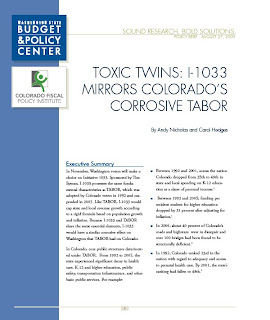
I-1033 will lead to severe deterioration in public structures that are vital to Washington’s future prosperity, much like what happened with Colorado’s TABOR amendment. Our latest report, coauthored with the Colorado Fiscal Policy Institute, details TABOR’s disastrous impact on education, health care, communities, and transportation. This post highlights some of our findings on the serious erosion in Colorado’s transportation infrastructure as a result of budget shortfalls created by TABOR.
Under TABOR, Colorado was unable to make adequate investments in roads, bridges, and other forms of transportation infrastructure. In 2007, the state ranked 48th among all 50 states in spending as a share of personal income on highways. The result:
- About 40 percent of the state’s roads were rated poor in 2006.
- Over 100 bridges in Colorado have been found to be structurally deficient.
- Congestion on Interstate 70 has been estimated to cost Colorado’s economy about $839 million each year.
To learn about TABOR’s adverse effects on other core public services – such as health care and education -- click here to view the entire report.
Editor’s note: This is the third post in a series about the sharp declines in core public services that occurred in Colorado as a result of the TABOR amendment. The next and final post in this series will discuss economic growth in Colorado during the period in which TABOR was active (1992-2005).





No comments:
Post a Comment